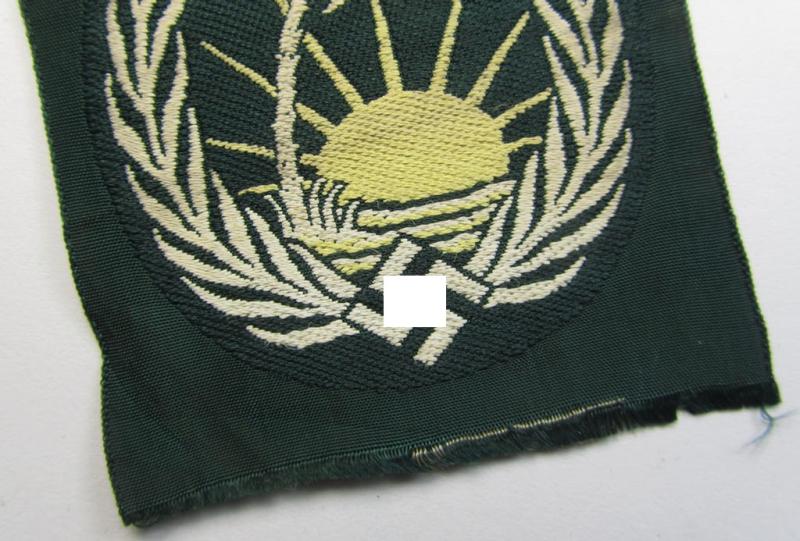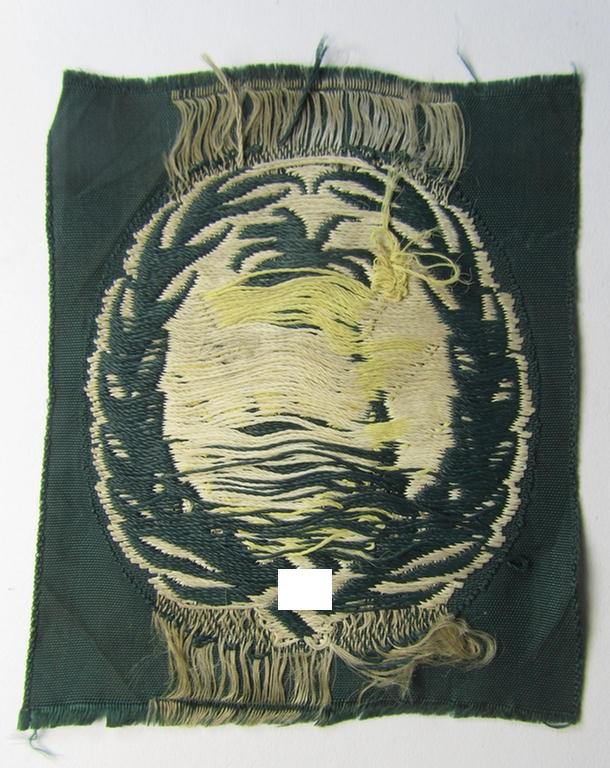Stunning, WH (Heeres) 'Ärmelabzeichen für Angehörige des Sonderverbandes 287 o. 288' being a 'virtually mint- ie. unissued' example as was executed in so-called: 'BeVo'-weave pattern
This is a truly rarely encountered and/or equally desirable WH (Heeres) 'BeVo'-woven armbadge that is known as: 'Ärmelabzeichen für Angehörige des Sonderverbandes 287 o. 288' and that comes in an overall very nice (and I deem virtually mint-/unissued-), condition. This special unit (ie. aka 'Sonderverband 288') was raised on July 1st 1941 in the town of Potsdam (near Berlin) and was composed of units from all over Germany. This unit simply named: '288' or: 'z.b.V. 288' was also known as: 'Combat Group Menton', after its commander. It originally contained elite-units from all branches of the German army: anti-tank men, mountain-troops, engineers and eventually three of the new 'StuG.III' assault-guns. There was also a company of so-called: 'Brandenburgers' (being special troops trained for special operations behind the enemy lines). These units were intended to prepare the way for the DAK as it flowed across the Nile and into the Middle East and on to India. Their most important component was a group of interpreters with their own printing presses. These men knew all the languages that would be needed, from Arabic and Persian dialects to Hindi, Urdi and Sanskrit. There was also a specialized group who had been trained to seize and rebuild the oil-fields of the region. When it became obvious that Rommel's rush to the Nile was not going to be succesful, the 288th (minus its interpreters and technicians) was sent to Africa as special reinforcement-troops. During the 'Gazala Line' battles, the '288th' saw action supporting the Italian 'Ariete' against the French forces defending the town of Bir Hacheim at the southern tip of the British defenses. They also participated in the El Alamein battles, and the last of their 'StuG.IIIs' was left behind for the British to contemplate. By October 31, the 'Sonderverband 288' was reorganized and renamed into the: 'Panzer-Grenadier-Regiment “Afrika”. The armbadge on offer here is nicely woven in the so-called: 'BeVo'-weave technique and is a truly beautiful example of this fantastic technique. The badge comes in a very nice- ie. virtually 'mint- ie. unissued' condition and comes as 'straightly cut-of the role' (it is NOT trimmed nor folded as can be seen on the pictures). The badge on offer here is naturally a 100% period- and/or genuine example for which I give a life-time garuantee (as always). Simply a truly attractive and rarely encountered WH (Heeres) armbadge!
Code: 57359



